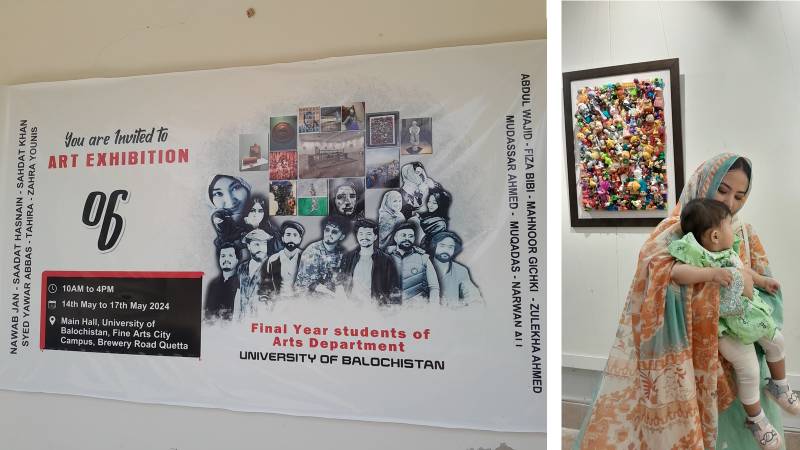
Art is becoming a medium to express human feelings, and young artists in the capital of Balochistan province are exhibiting their theses for visitors before they embark on their professional careers. These artistic pieces on display in Quetta cover a range of themes including language, culture, mental health, recycling, climate change, wildlife, refugees, migrations, local culture suffocation, and species extinction. Young artists have been calling upon rulers, policymakers, and leaders to make decisions that secure a peaceful and loving environment, instead of fostering hatred, division, and otherisation. Balochistan boasts one of the largest levels of human diversity in the region, where different languages, cultures, ethnicities, and religious groups have coexisted since prehistoric times.
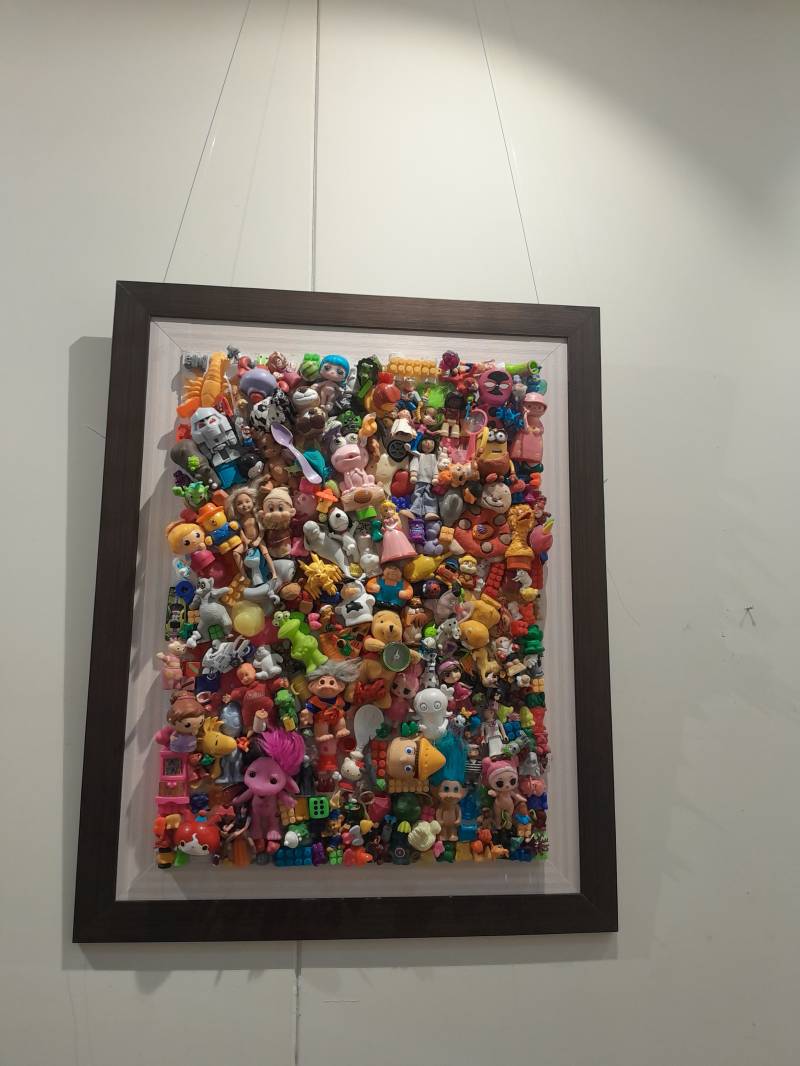
Zahra Batool Hazara, an artist from Marriabad, Quetta, and a member of the persecuted Hazara community, studies fine arts at the University of Balochistan. Her art piece was displayed along with those of other fine arts students at an art gallery in the university, as part of an exhibition held from the 14th to the 17th of May 2024.
These theses represent the final projects of the students, and the exhibition took place at the University of Balochistan sub-campus on the outskirts of Quetta city.
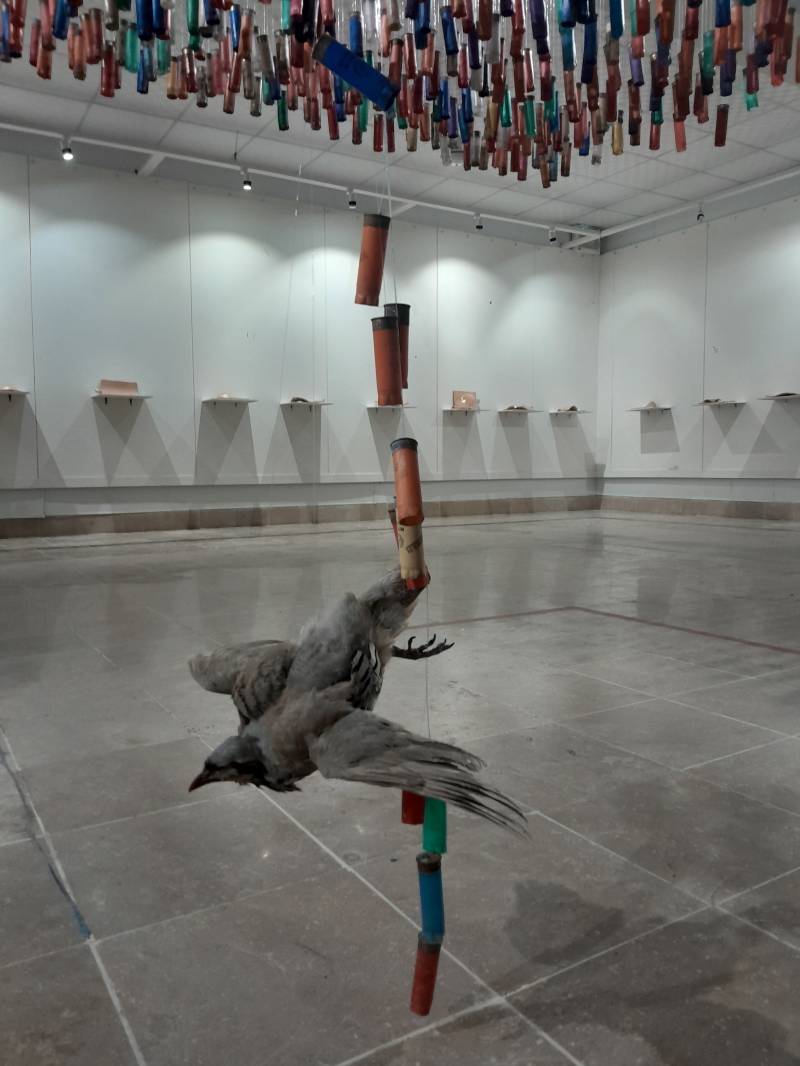
“Childhood is one of the most beautiful phases of life where we don’t know the language of hate, only love. We are peaceful, with no jealousy, no comparison, no race, and no competition. We are unaware of any religion, caste, colour, creed, or custom. Childhood leaves a memory in our heart and soul, so it should be recalled in every phase of life. If a person’s childhood is lost, we are left only with demons,” says Zahra Batool Hazara, whose thesis focuses on childhood.
According to Zahra, humans complete their psychological journey in childhood, and memories from that age become lifelong companions. Artists produce their inner child feelings through their love, hate, likes, and dislikes, expressed through visuals, music, sculpture, and paintings. Artists become leaders, showcasing their culture, history, psychology, politics, rights, and feelings through these artistic expressions.
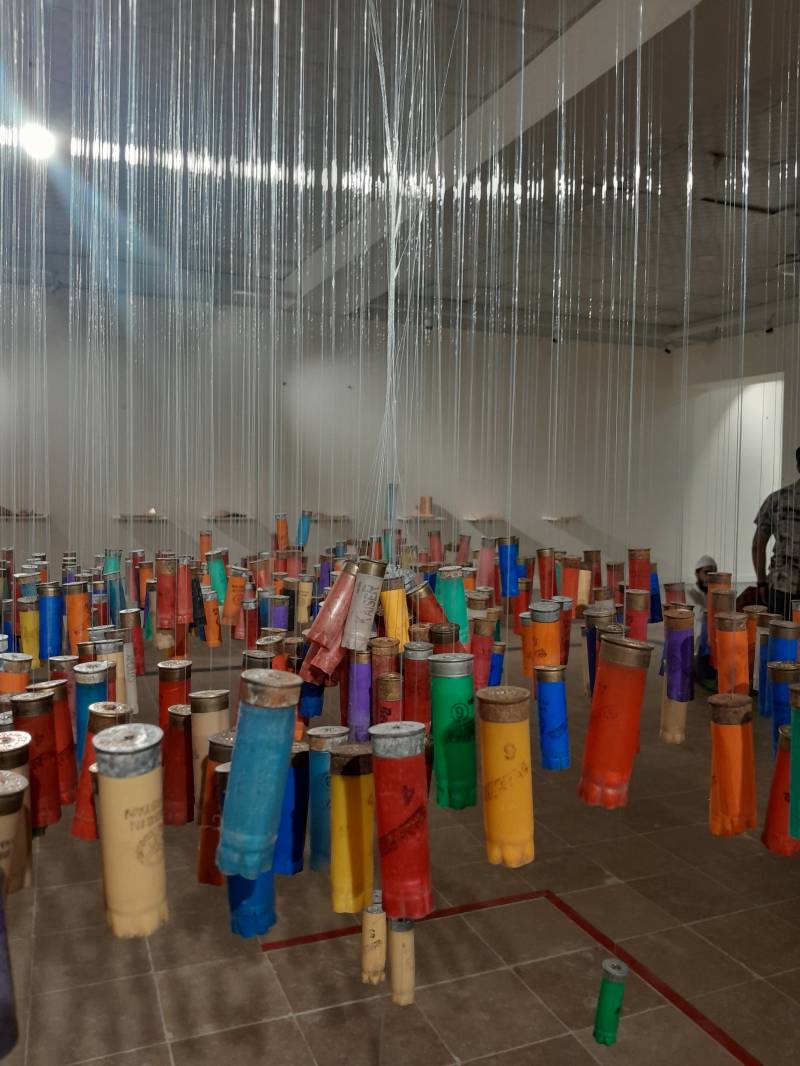
Another student theme was “Human Creation and Human Mess,” where the artist created a sculpture of a human using dough and clay, encased in a black plastic bag. This work clearly emphasises recycling and reusing waste materials, addressing one of the significant issues of climate change and global warming. The global community advocates for minimising waste, and through his art, Sadaat Khan aims to raise awareness about recycling and reusing items to maintain a clean and tidy world for future generations.
The main message of this piece is the contrast between human creation and the mess humans generate. While humans are created in an organised and structured manner, history shows that we have increasingly created messes. Organic materials are turned into inorganic waste, leading to diseases and environmental degradation. A prime example is plastic bags, which were invented to ease carrying goods but are now non-biodegradable pollutants that harm our planet and health. Sadaat Khan, 25, a young artist, suggests replacing plastic bags with cloth bags to mitigate this issue.
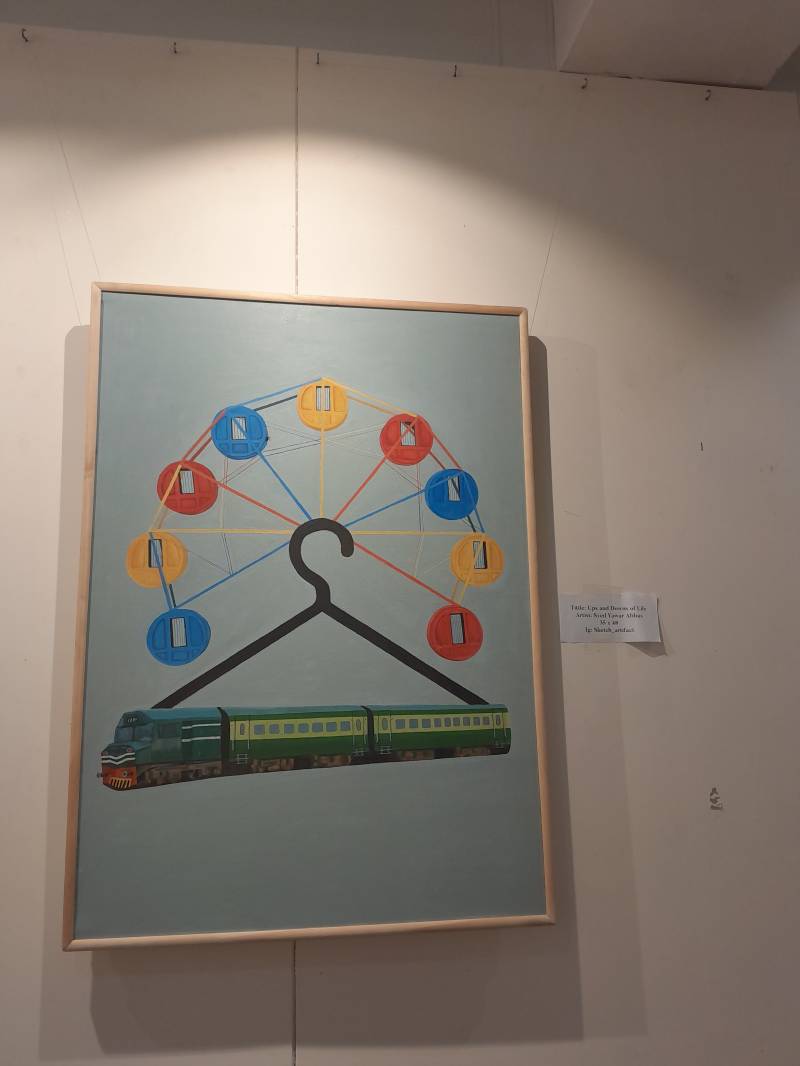
Sadaat Khan’s vision is deeply connected to the recent devastating effects of climate change in Balochistan. Flash floods and prolonged droughts have disrupted water tables, led to human migrations to urban areas like Quetta, and caused overpopulation and urbanisation challenges. These experiences have shaped Khan’s perceptions and artistic ideas.
Wajid, a Baloch student, expresses concern over the decline of native languages in Balochistan. He recalls using wooden writing boards in his childhood, particularly in schools to improve handwriting. Over time, technological advancements have replaced these boards with electronic books, and English has become more dominant than national languages due to a lingering colonial mindset. This shift, he argues, is not supported by the people or the state, and local languages like Pashto, Balochi, Brahui, Hazaragi, and others are threatened by popular culture and Western ideologies.
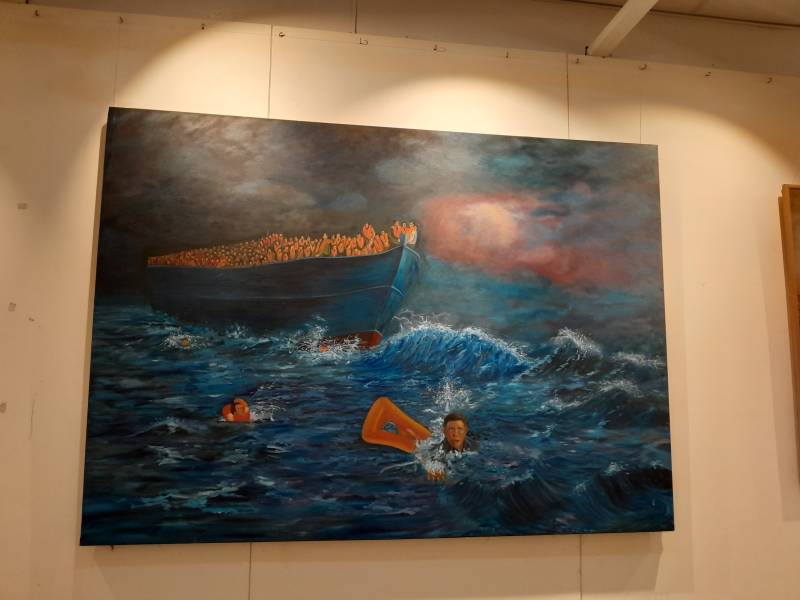
Wajid points out that many countries prioritise their native languages. In China, for instance, foreigners must learn the local language, and many European countries also prioritise their languages. He believes that the shift from natural tools to digital technologies has diminished human creativity. Wajid, a final-year Fine Arts student, emphasises the importance of preserving and fostering national languages to maintain cultural identity and creativity.
Syed Yawar Abbas has depicted the obstacles of life through his sketches, titling his work "Ups and Downs of Life." He explained that life is balanced by opposing factors and referenced Karl Marx’s dialectical materialism, where thesis, antithesis, and synthesis bring us to the global village we live in. He stated that there is no happiness without pain, and no problem without a solution. Life operates on dualities—light is meaningless without darkness. He emphasised that youth should never be disheartened, especially in this era of stress, anxiety, and trauma. Many young people quickly lose hope and succumb to depression and anxiety. Life is inherently challenging, and we often remain unaware of others' struggles, said Syed Yawar, an Urdu-speaking resident of Quetta, known locally as Quettawall.
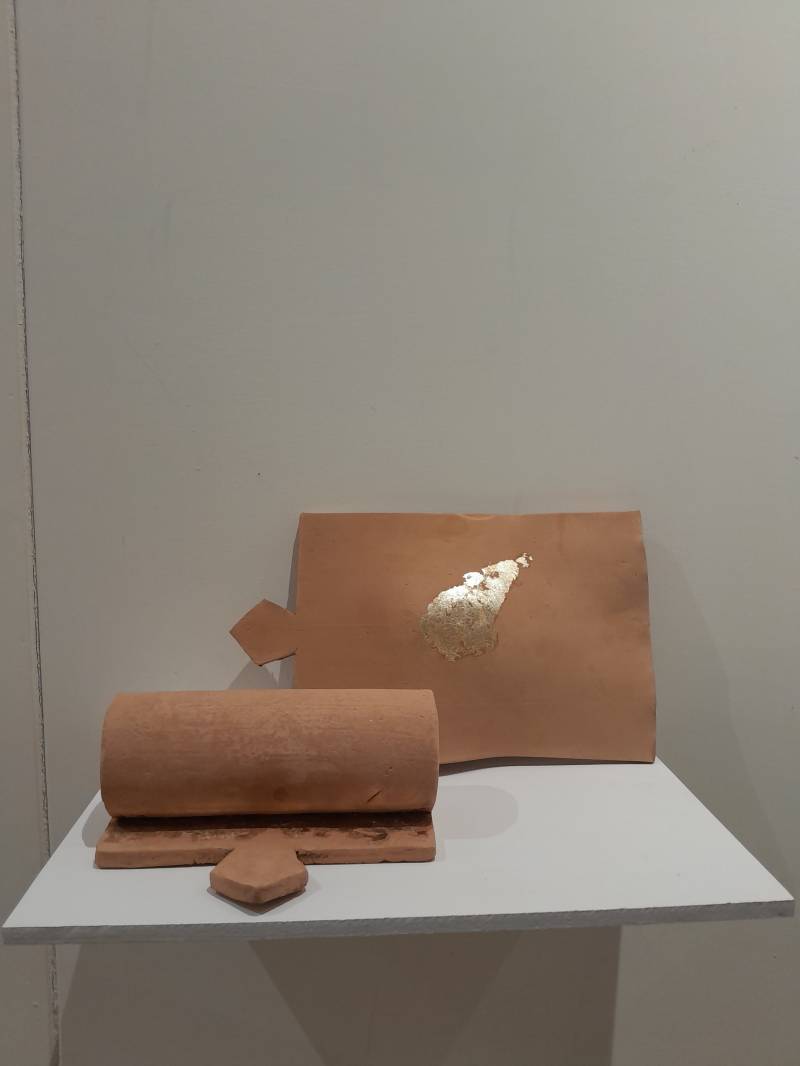
Another significant topic within the climate change and environment category is the endangered wildlife, addressed by Sahadat Hasnain. He is deeply concerned about the extinction of wildlife species in Balochistan, highlighting the lack of government protection and the brutal hunting practices leading to the deaths of thousands of endangered birds each year. Specifically, the Siberian Houbara Bustards and many other bird species are being decimated. Officials, and sometimes invited Arab VIPs from the Persian Gulf states, are often involved in this illegal hunting, which is devastating the region’s natural beauty.
Sahadat Hasnain Baloch, 27, underscored the importance of wildlife continuity alongside human life. In Pakistan, people hunt animals out of self-interest, often unaware of the risk of species extinction. For instance, the markhor and chakor populations are being eradicated. His thesis focuses on the endangerment of wildlife.
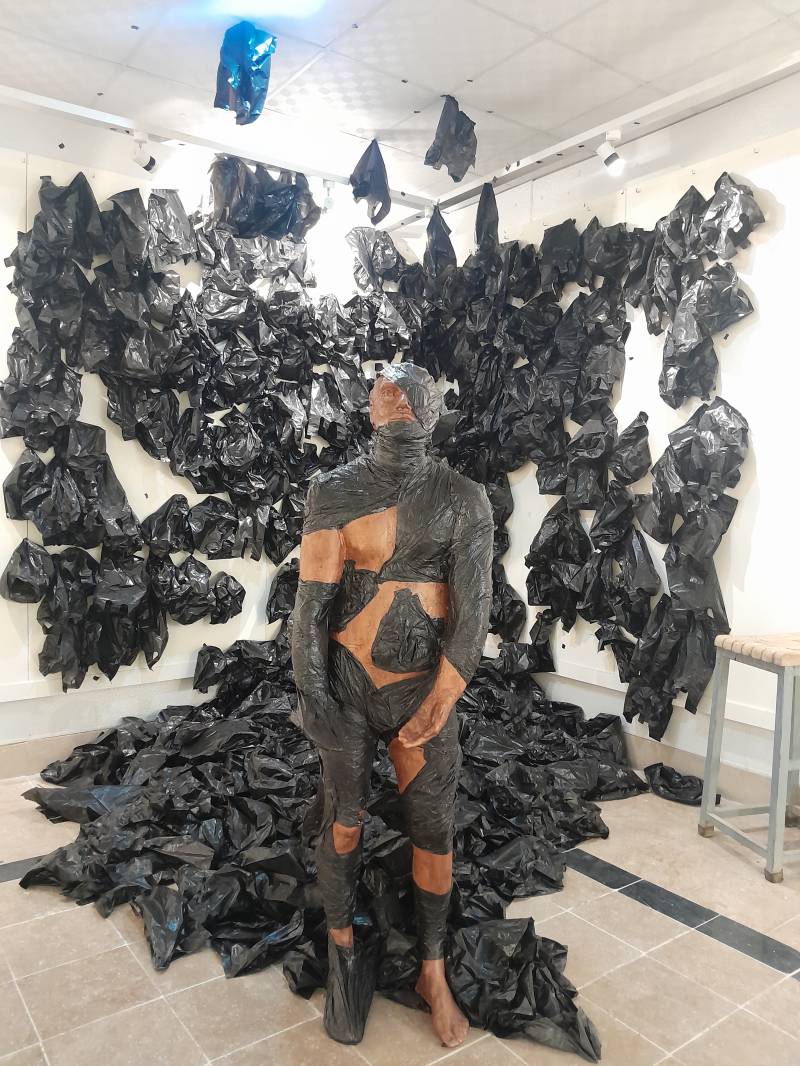
The Afghans represent one of the largest refugee populations due to ongoing war in their homeland. Many pass through Quetta and Peshawar en route to Western countries, often via dangerous and illegal human trafficking routes. The media frequently portrays these refugees negatively, even though they are victims suffering immensely. Their numbers have surged since the Taliban’s takeover of Kabul and the fall of the Afghan government. Tahira Batool Hazara, herself from a community facing hardships in Afghanistan and Pakistan, highlighted the perilous journeys many undertake. They often drown in unsafe boats while attempting to reach Australia and Europe, seeking refuge from their dire circumstances.
No one ever wishes to leave their motherland and the soil of their birth unless driven by extreme fear. Since the Taliban regime took power in Afghanistan in 2021, hundreds of people have migrated to neighbouring countries, especially Pakistan, seeking peace and safety. However, the state of Pakistan's repatriation orders have further troubled these refugees, hurting their morality, dignity, and sentiments. They feel unaccepted anywhere, even as human beings, stated the artist Tahira Batool Hazara. Her paintings depict ships drowning in the blue sea around Western countries, symbolising the refugees' plight.
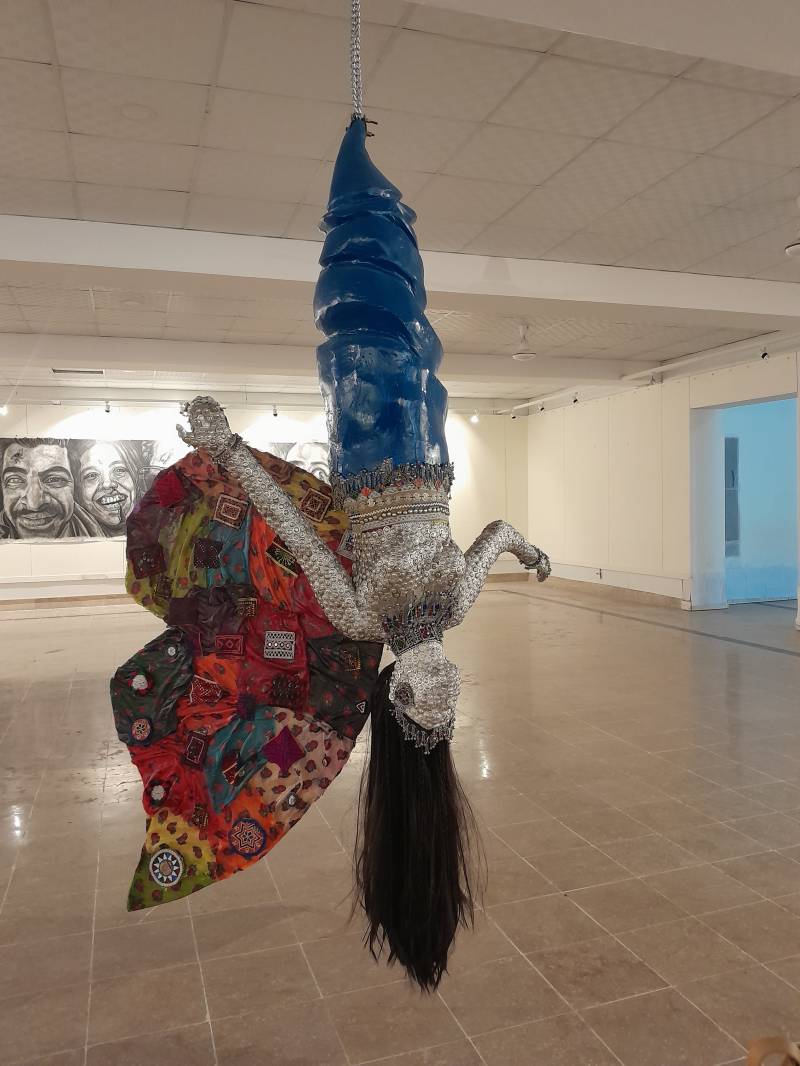
Culture is a complete identity of an ethnic group, nation, or community anywhere in the world. Those living in countries controlled by hegemonic structures often witness the erosion of their local cultures, leading to a degradation of pride in their indigenous traditions. Muqqadasa Kakar, a young Pashtun woman from Northern Balochistan—the Pashtun belt, focuses on the culture of nations, particularly Afghan culture. She highlights that the "woman shuttlecock" imposed by the Taliban is foreign to Pashtun and Afghan traditions. Traditionally, Afghan women adorned their suits with embroidery and tattoos—Khaloona in Pashto—as beauty spots on their white faces. Afghan women have historically used Panrhooni—duppata as their head cover, not the shuttlecock burqa.
Culture shapes a person’s lifestyle and beliefs. Adopting new styles often hybridises our culture. The shuttlecock burqa is not part of our tradition; instead, we have beautiful dresses with handcrafted embroidery. “I believe women are pressured in some homes to wear the shuttlecock burqa with the misconception that it is a part of our culture. Women can be safe and comfortable in our traditional dress too. We should foster our own culture rather than adopting Western styles advertised globally," says Muqqadassa Kakar, 24, a young female activist and Fine Arts student at the University of Balochistan.
These artists believe they are creators of art, conveying messages to the world, rulers, and policymakers. They urge decision-makers to consider human needs, acknowledge human-caused troubles, and treat all humans as equal children of Eve and Adam. This, they assert, is the only way to achieve development, progress, peace, harmony, and a beautiful world for all.

